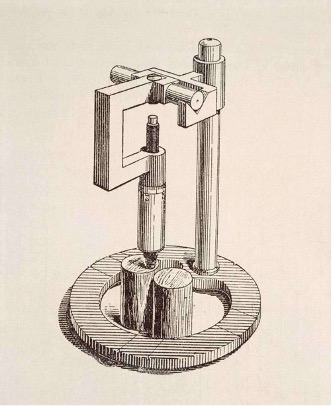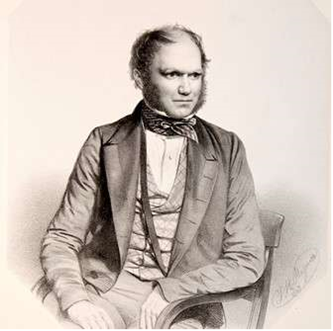Darwin is not usually regarded as an experimenter, but rather as an astute observer and a grand theorist. His early career seems to confirm this. He began with detailed note-taking, collecting and cataloguing on the Beagle, and edited a descriptive zoology of the voyage, working with leading experts and taxonomists. After the voyage, he started to speculate and gradually build evidence for large-scale theories in geology and the origin of species. The species theory was of course kept secret and worked upon for decades, as Darwin collected 'all kinds of facts' across a wide range of fields (letter to W. D. Fox [25 January 1841]). He used his house and garden as a space of natural historical study, tracing the paths of bees, recording minute variations in flower forms and pigeon breeds, watching the behaviour of his children and pets, making regular visits to the zoological gardens to study monkeys and other exotic animals on display. He also gradually built up an impressive network of observers through correspondence, so that he was able to gather information on plants, animals, and peoples from around the world, and acquire specimens for his own use.
A portrait of Darwin in 1849 shows him with a specimen bag over his shoulder and eyes gazing intently, as if following a train of thought. This portrait fits nicely with the view of natural history as a science of observation, collection, and classification, rather than experimentation. According to this view, Darwin was a 'philosophical naturalist' whose species theory challenged existing systems of classification, and the fixed boundaries between varieties, species, and genera that had long served as the basis for natural order. Ultimately, his grand theory placed classification on a new foundation, with relations based on common descent rather than morphological affinity.
The two-fold division of Darwin's science between observation and theory also seems to reflect parallel developments in the sciences during the nineteenth century. Beginning in the 1820s, concerns were raised about undo 'speculation', and the pressing need for increased observations across all fields of science, especially in new territories controlled by European nations. The British Association, the Admiralty, and other institutions encouraged more and more people to observe, and to send 'facts', specimens, and descriptions to authorities who could do the more advanced work of theory. Darwin contributed to this movement, writing one of the guides to travellers that was issued by the Navy (Herschel ed. 1849). He also treated many of his correspondents in this fashion, requesting highly specific information, while rarely entering into any theoretical discussion or sharing the ultimate use to which the information would be put. He used letters columns in periodicals, and questionnaires to a similar end, and tapped into the large networks of institutional heads like Joseph Dalton Hooker and Asa Gray. Darwin adopted a perspective of great caution with regard to theorizing, and was highly critical of overly or hastily speculative work, including some of his own early geological publications. The final picture that we then have of Darwin is that of a gentleman naturalist, able to work across zoology, botany, geology, and other fields that were just emerging like psychology and anthropology. But this was a tradition on the wane, and it was gradually eclipsed in Darwin's own lifetime by the more specialized, experimental and laboratory-based life sciences. As many scholars have noted, Darwinian theory went into decline at the end of the nineteenth century, only to be vindicated by the intensively experimental work behind the 'new synthesis'.
Several things are misleading about this picture. The most obvious is the sharp distinction between observation and theory. Darwin would be the first to defend the view that almost every useful observation is guided by some hypothesis. Most of the fact gathering that he performed was after the basic form of his evolutionary theory was already in place. 'I can have no doubt that speculative men, with a curb on make far the best observers' (letter to C. H. L. Woodd , 4 March 1850). He made the point more emphatically to Alfred Russel Wallace, 'I am a firm believer, that without speculation there is no good & original observation' (letter to A. R. Wallace, 22 December 1857). Much of his research and many publications after Origin of Species, were full of observations that were made to further substantiate evolutionary theory. Darwin was also greatly heartened by the younger generation of researchers who were inspired by his theory and whose work addressed aspects of that theory.
There is another more subtle distinction that needs to be questioned: that between observation and experiment. Today we often assume that experimentation involves a laboratory, a highly controlled space with specialized equipment. In Darwin's day this was by no means the case. The terms 'observation' and 'experiment' were often used interchangeably. The meaning of experiment was extremely broad. It was often used to refer to the work of animal and plant breeders, performing crosses between particular individuals or varieties, measuring the effects of different soils or feeds on growth and fertility over generations. The term was also used very broadly in medicine and natural history, sometimes to refer to naturally occurring phenomena. Darwin clearly regarded many of his domestic science practices as experimental: his studies of infant development and animal behaviour, the detailed work on barnacles and pigeons, moving ants from one nest to another, divergence studies in small plots of uncultivated land, the decades of botanical research on crossing and comparative fertility, the movement of leaves, stems, and roots undetectable to the naked eye. An 'experiment' might involve repeating the practices of breeders, but with a different aim; reproducing natural processes by hand (applying the pollen of one flower to another, immersing seeds in salt water, feeding them to birds and fish); measuring and counting natural productions (stamens, pistils, pollen seeds; visits of bees to flowers); replicating complex processes in miniature (small plots of land).
Experimentation in Darwin's day was not the monopoly of elite, highly specialized, or laboratory-based practitioners. It was a domain of gardeners and nurserymen, silkworm breeders and poultry fanciers, landowners, architects, and writers. Darwin sought the advice of an engineer on his early experiments with Drosera (letter to Edward Cresy, 12 December [1860]). He employed a gardener to perform the most meticulous experiments on fertilization in orchids (John Scott). In his choice of correspondents and collaborators, Darwin valued patience, caution, and attention to detail over professional status. This is well illustrated in his correspondence with Scott, William Tegetmeier, Lydia Becker, Mary Treat, and many others. From the 1860s, he also showed a readiness to engage with new forms of expertise. This is especially clear in his correspondence with Friedrich Hildebrand and other German botanists, and with experimental physiologists such as John Burdon Sanderson and Michael Foster.
A final feature to note about Darwin's experimental life is the pleasure that it afforded. In letters, he sometimes joked about the dubious nature of 'little experiments' or trivialized their importance. Emotional expression, which resulted in a book nearly 400 pages long, was just a 'hobby horse'. There were bursts of joy and the enthusiasm: 'I am amusing myself with several little experiments'; 'I have become very fond of little experiments' (letter to J. D. Hooker, [21 March 1857]; letter to J. S. Henslow, 27 June [1855]). Of course, there was also disappointment and frustration: 'all nature is perverse & will not do as I wish it' (letter to W. D. Fox, 7 May [1855]). But increasingly over time, detailed observation and experimental work became Darwin's driving passion, his greatest balm at times of poor health, his main source of happiness beyond his own family. In the midst of writing his final book on earthworms, he wrote to his old Cambridge friend, John Herbert: 'I go on working at Science … & am never happy except when at work' (letter to J. M. Herbert, 25 December [1880]).

Horace Darwin's instrument to measure sinking of stones due to worm activity



